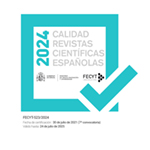El Imperio de la Triple Alianza (Tenochtitlan, Texcoco y Tlacopan) en el siglo XXI
Resumen
Although publication of research about the Mexica Empire has never stopped, this activity increased in the 1980´s, reaching its climax in 1996 with the publication of two major studies on the Aztec Empire (Carrasco 1996 and Berdan et al. 1996). Since that moment, the picture has changed and the study of the empire has moved in several directions; the two main approaches are the spatial and temporal amplification of the field. The first derives from the necessity to carry out regional studies in order to understand the reality of the empire in its periphery, tasks in which archaeology should play an important role. The second approach has a narrow temporal focus on the evolution of the empire—that is, the core and the periphery—and we must include areas which had never been part of the empire. There is a «before» and an «after» in the conquest of the different regions, and we could add a «meanwhile». On the other hand, there is a longer duration in the relationship with older empires like the immediate precedent of Azcapotzalco or other older empires, such as that centered in Teotihuacan. Finally, it is necessary to integrate this research in a common model that works. Only by putting the Aztec Empire in its Mesoamerican context, spatial and temporal, can we progress in its understanding.Descargas
Descarga artículo
Licencia
La Revista Española de Antropología Americana, para fomentar el intercambio global del conocimiento, facilita el acceso sin restricciones a sus contenidos desde el momento de su publicación en la presente edición electrónica, y por eso es una revista de acceso abierto. Los originales publicados en esta revista son propiedad de la Universidad Complutense de Madrid y es obligatorio citar su procedencia en cualquier reproducción total o parcial. Todos los contenidos se distribuyen bajo una licencia de uso y distribución Creative Commons Reconocimiento 4.0 (CC BY 4.0). Esta circunstancia ha de hacerse constar expresamente de esta forma cuando sea necesario. Puede consultar la versión informativa y el texto legal de la licencia.









